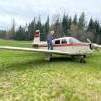New engine will not start after already been started
-
Members Online
- Max Clark
- Old Chub
- DonMuncy
- SKI
- Cruiser73
- ElkoRandy20J
- EricJ
- Skyland
- tlhoward706
- stevesm20b
- Guillaume
- jordanschooler
- Marcopolo
- LANCECASPER
- GeeBee
- DXB
- 201Steve
- TangoTango
- Flyler
- Stubby
- thomas1142
- caractacuspdoom
- cruiserflyer
- BrentS
- Slick Nick
- N201MKTurbo
- TravelingIA98
- TaildraggerPilot
- AndreiC
- gwav8or
- varlajo


Recommended Posts